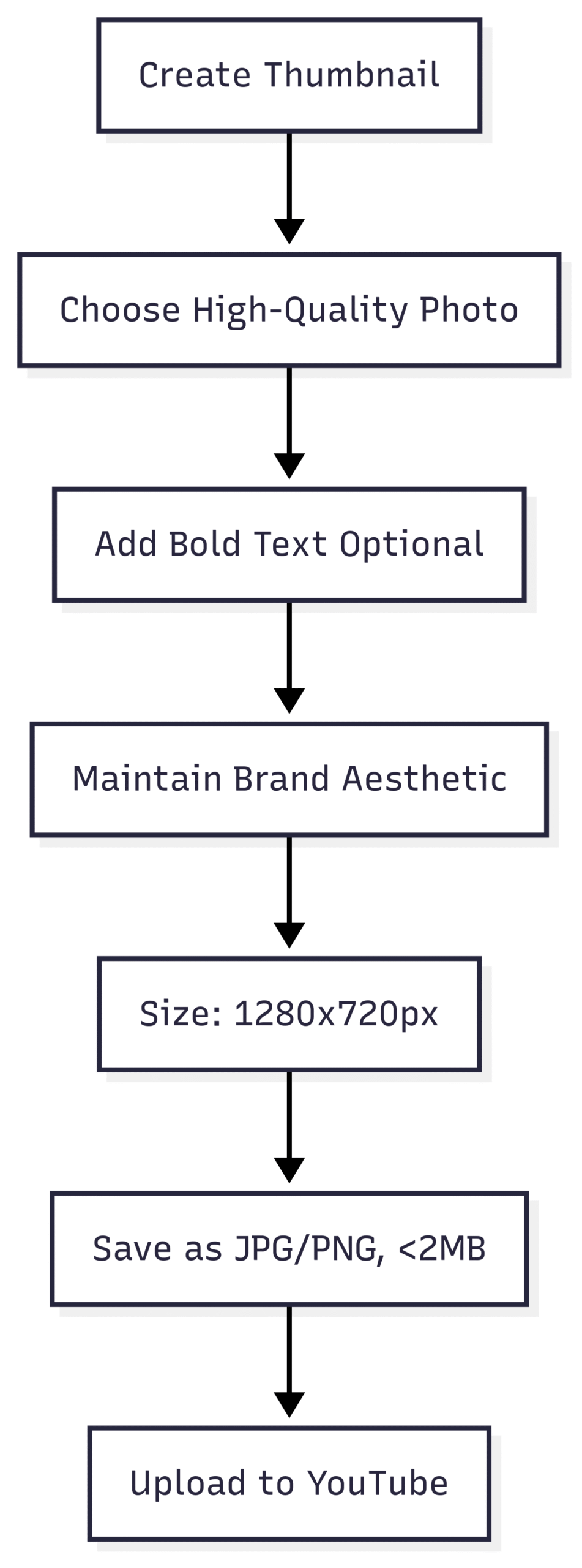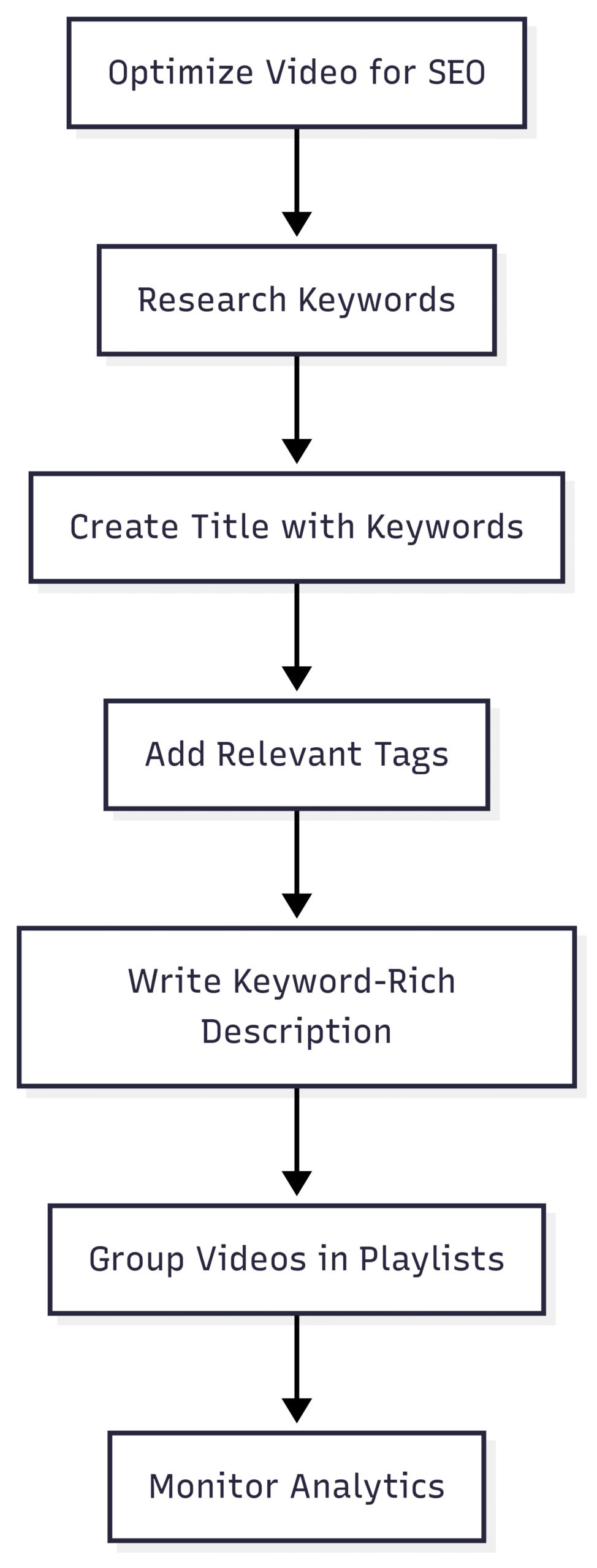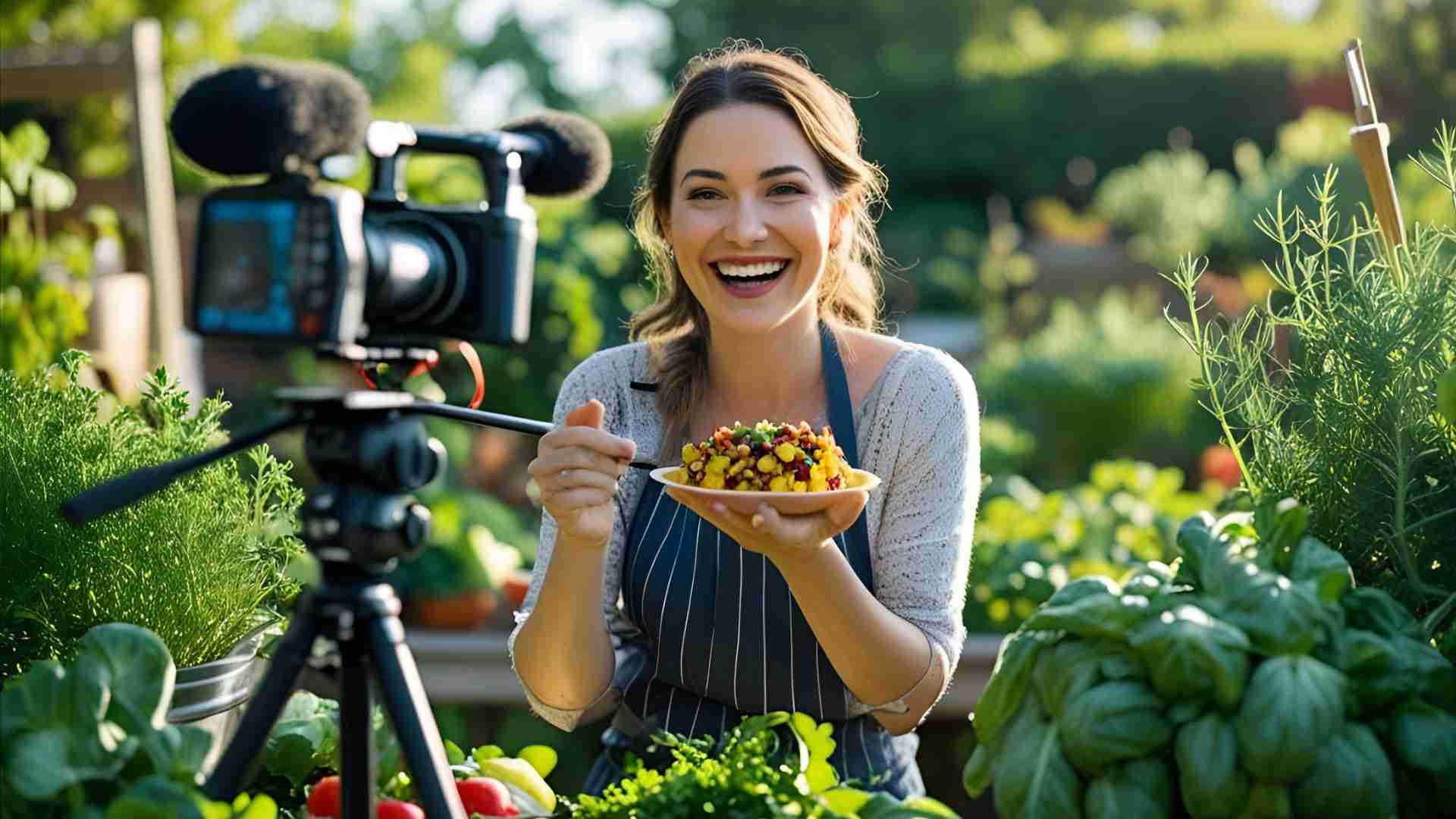Top 5 Tips for Food Bloggers on YouTube
Discover the top 5 tips for food bloggers on YouTube to boost engagement, grow your channel, and create compelling content that resonates with viewers.
YouTube has become a powerhouse platform for food bloggers, offering a dynamic way to share culinary creations, connect with audiences, and build a brand. With over 2 billion monthly active users, YouTube provides an unparalleled opportunity to showcase your cooking skills, share recipes, and engage with a global audience. However, standing out in the crowded digital kitchen requires strategy, consistency, and creativity. This article dives deep into the top five tips for food bloggers on YouTube, offering actionable advice to help you grow your channel, captivate viewers, and turn your passion for food into a thriving online presence.
1. Prioritize Consistency in Content Creation
Consistency is the backbone of a successful YouTube channel. Regular uploads build trust with your audience, signal reliability to the YouTube algorithm, and increase watch time—a critical metric for channel growth. According to YouTube’s algorithm, channels that post consistently tend to rank higher in search results and recommendations, as they demonstrate reliability akin to traditional television programming.
Why Consistency Matters
- Audience Trust: Viewers expect new content on a predictable schedule, much like tuning into a favorite TV show. Inconsistent posting can lead to disengaged subscribers who may forget your channel exists.
- Algorithm Advantage: YouTube prioritizes channels with higher watch time. Regular uploads keep viewers coming back, boosting engagement metrics.
- Brand Recognition: A steady stream of content reinforces your brand identity, making your channel memorable.
How to Stay Consistent
- Batch Filming: Dedicate a day to film multiple videos—aim for 2-4 in one session. This creates a content buffer, allowing you to maintain a weekly posting schedule without weekly filming. For example, filming four videos in one day provides a month’s worth of content if you post weekly. Pro Tip: Change outfits between videos to maintain a fresh look and avoid signaling batch filming to viewers.
- Content Calendar: Plan your videos in advance using tools like Asana or Trello. A content calendar keeps you organized, ensuring you have a clear roadmap for topics and posting dates. For instance, plan a series around seasonal themes, like a “Holiday Baking Series” with videos on sugar cookies, gingerbread, and royal icing.
- Series Development: Create multi-video series to hook viewers. A series encourages binge-watching, as viewers move from one video to the next. For example, a “30-Minute Meals” series could cover quick weeknight dinners, with each video focusing on a different recipe. Use YouTube’s playlist feature to group series videos, enabling autoplay for seamless viewing.
Recommended Posting Frequency
While posting once a week is ideal for most food bloggers, prioritize quality over quantity. If weekly uploads aren’t feasible, aim for biweekly posts but maintain a consistent schedule. High-quality, engaging videos posted regularly will outperform rushed, low-effort content.
| Posting Frequency | Pros | Cons |
|---|---|---|
| Weekly | Maximizes algorithm favor, builds audience habit | Time-intensive, requires planning |
| Biweekly | More manageable for beginners, maintains consistency | Slower audience growth |
| Monthly | Easiest to maintain | Risk of losing viewer interest |
2. Master the Art of Video Thumbnails
Thumbnails are the first impression of your video, acting as a visual hook to entice viewers to click. For food bloggers, thumbnails are as critical as a beautifully plated dish on a blog post. A compelling thumbnail can significantly boost click-through rates, while a lackluster one may deter potential viewers.
Thumbnail Best Practices
- Use High-Quality Photos: Opt for a professionally shot photo rather than a video frame. Channels like Pick Up Limes use vibrant, plant-filled food photos to convey a cozy, natural aesthetic, while SORTEDfood employs bold colors and text for instant brand recognition.
- Incorporate Text Sparingly: If using text, make it large and bold to stand out on small screens. For example, SORTEDfood uses eye-catching text like “EPIC BURGER!” to grab attention. Tools like Canva offer customizable YouTube thumbnail templates for those without Photoshop expertise.
- Keep It Simple: Thumbnails are often viewed at small sizes (e.g., 120px wide in Google search results). Avoid cluttered designs and focus on a single, clear image that communicates the video’s content. A close-up of a mouthwatering dish, like a gooey chocolate cake, works better than a busy kitchen scene.
- Maintain Brand Consistency: Develop a recognizable thumbnail style. Whether it’s a specific color palette, font, or layout, consistency helps viewers instantly identify your content. For example, Pick Up Limes sticks to text-free, food-focused thumbnails, reinforcing their minimalist brand.
Thumbnail Design Tools
- Canva: Offers free and paid plans with YouTube-specific templates. Pricing: Free tier; Pro plan at $12.99/month.
- Adobe Photoshop: Industry-standard for professional editing. Pricing: $22.99/month (Creative Cloud Photography plan).
- Figma: Collaborative design tool with thumbnail templates. Pricing: Free tier; Professional plan at $12/month per editor.
Thumbnail Size and Specs
YouTube recommends thumbnails at 1280×720 pixels (16:9 aspect ratio) with a minimum width of 640 pixels. Use JPG or PNG formats, keeping file sizes under 2MB for optimal loading.

3. Strategize Your Links for Maximum Engagement
Links are a powerful tool to drive traffic, promote your brand, and enhance viewer interaction. Food bloggers can leverage YouTube’s linking features to connect viewers with related content, social media, and monetization opportunities.
Where to Place Links
- Channel Page: Feature links to your website, blog, and social media (e.g., Instagram, Twitter) on your channel’s “About” tab. For example, the Food Blogger Pro channel links to their website and social accounts, making it easy for subscribers to explore more content.
- Video Description Box: Include a brief video outline with keywords in the first 1-2 sentences to boost SEO. Add links to related videos, blog posts, social media, FAQs, and affiliate links (with a disclosure). For instance, link to a blog post with the full recipe featured in your video.
- Cards: These interactive pop-ups (the “i” icon) can link to videos, playlists, channels, or external websites. Add cards via YouTube Studio under the “Cards” option. Place external links toward the video’s end to retain viewers.
- End Screens: Use the last 5-20 seconds of your video to promote other videos, playlists, subscriptions, or external links. End screens extend watch time by guiding viewers to more content. Import templates from previous videos to streamline the process.
Linking Best Practices
- Relevance: Ensure links align with the video’s content to avoid overwhelming viewers. For example, link to a recipe blog post rather than unrelated merchandise.
- Strategic Timing: Place cards with external links late in the video to maximize watch time. Early links risk viewers clicking away prematurely.
- Clear Calls-to-Action: In the video, verbally encourage viewers to check out links in the description or click cards for more content.
| Link Type | Purpose | Best Practice |
|---|---|---|
| Channel Page | Brand promotion | Link to website, blog, social media |
| Description Box | SEO, cross-promotion | Include keywords, related content links |
| Cards | Interactive engagement | Use sparingly, place near video end |
| End Screens | Extend watch time | Promote videos, playlists, subscriptions |
4. Optimize for YouTube SEO
Search Engine Optimization (SEO) is as crucial on YouTube as it is for blogging. Effective SEO ensures your videos rank higher in search results and appear in suggested videos, driving organic traffic.
Key SEO Strategies
- Keyword Research: Use tools like Hypersuggest ($9/month) or TubeBuddy (free tier available) to identify high-traffic, low-competition keywords. For example, “easy vegan dinner recipes” may have higher search volume than “vegan meals.” Keep a running list of keyword ideas for future videos.
- Video Titles: Place primary keywords at the title’s start, e.g., “Easy Vegan Dinner Recipes: 3 Quick Meals.” Use brackets or parentheses for a 38% performance boost, e.g., “Perfect Banana Bread Recipe [Moist & Easy].” Include your brand name for visibility, like “Hot for Food.”
- Video Length: Aim for 7-15 minutes, as longer videos tend to rank better and offer more ad placement opportunities. However, prioritize content quality over arbitrary length.
- Tags: Add 5-10 relevant tags, starting with your primary keyword. Avoid irrelevant tags, as they can confuse YouTube’s algorithm. For example, for a vegan pasta recipe video, use tags like “vegan pasta,” “easy pasta recipe,” and “plant-based dinner.”
- Playlists: Create keyword-rich playlists to organize content and boost discoverability. For example, a “Quick Weeknight Dinners” playlist with a keyword-optimized description can appear in search results.
SEO Tools
- Hypersuggest: Keyword research for YouTube and Google. Pricing: $9/month (Basic plan).
- TubeBuddy: Browser extension for keyword research and analytics. Pricing: Free tier; Pro plan at $9/month.
- VidIQ: Analytics and SEO optimization tool. Pricing: Free tier; Pro plan at $7.50/month.

5. Boost Watch Time with Engaging Content
Watch time is a critical factor in YouTube’s algorithm, determining how often your videos appear in search results and recommendations. High watch time signals that your content is engaging, encouraging YouTube to promote it further.
Understanding Watch Time
YouTube tracks audience retention, measuring how long viewers watch your video and whether they stay until the end. Low retention (e.g., viewers leaving early) can hurt your video’s ranking. Check audience retention in YouTube Studio under “Analytics” > “Engagement.”
Strategies to Improve Watch Time
- Compelling Intros: Hook viewers in the first 10-15 seconds with an engaging intro. For example, start with a question like, “Want to make the creamiest pasta in 15 minutes?” to pique curiosity.
- Clear Communication: Use descriptive language to convey flavors and textures, as viewers can’t taste your dishes. Instead of “delicious,” use “buttery, melt-in-your-mouth.” Tools like the Escoffier Flavor Wheel can help refine your vocabulary.
- Break Up Filming: Record recipes in segments to allow multiple camera angles and smoother editing. This keeps the video dynamic and engaging.
- Audience Interaction: Encourage comments, respond to viewer questions, and create videos based on their requests. For example, give a shoutout to a viewer who suggested a recipe idea.
- Analyze Retention: Review audience retention graphs to identify drop-off points. If viewers leave early, refine your intro or adjust pacing to maintain interest.
Example Audience Retention Analysis
| Video Section | Retention Rate | Action Needed |
|---|---|---|
| Intro (0-15s) | 80% | Strong; keep engaging |
| Middle (2-5 min) | 50% | Add visuals or tighten pacing |
| End (7-10 min) | 30% | Shorten or add a call-to-action |
Starting Your YouTube Cooking Channel: A Step-by-Step Guide
Beyond the top five tips, launching a YouTube cooking channel requires a strategic foundation. Here’s how to get started:
1. Choose a Niche
Select a theme that aligns with your passion, expertise, and audience demand. Examples include:
- Specific cuisines (e.g., Italian, vegan).
- Cooking styles (e.g., budget meals, gourmet desserts).
- Non-kitchen content (e.g., restaurant reviews, chef interviews).
For instance, if you’re skilled at plant-based cooking, focus on “Easy Vegan Recipes for Beginners” to attract a specific audience.
2. Develop a Content Plan
Create a list of video ideas based on cookbooks, personal recipes, or viewer questions. Use a content calendar to schedule filming, editing, and uploading. Example: Plan a “Summer BBQ Series” with videos on grilled veggies, marinades, and desserts.
3. Define Your Style
Choose a consistent tone, whether it’s humorous, educational, or inspirational. Your style should reflect your brand and resonate with your target audience. For example, a lighthearted, pop-culture-infused style may appeal to younger viewers, while a technical, science-based approach may attract serious home cooks.
4. Invest in Equipment
Start with a smartphone and natural lighting, but consider upgrading to:
- Camcorder: Canon PowerShot G7 X Mark III ($749).
- Tripod: Manfrotto Compact Action ($89.99).
- Microphone: Rode VideoMicro ($59).
-
Lighting: Neewer 2-Pack LED Lighting Kit ($129.99).
These investments enhance video quality, making your content more professional.
5. Create and Edit Content
Plan your video structure, including how you’ll describe cooking steps. Use editing software like Adobe Premiere Pro ($22.99/month) or DaVinci Resolve (free) to polish your videos. Add overlay text or voiceovers for clarity.
6. Monetize Your Channel
Once you reach 1,000 subscribers and 4,000 watch hours, join the YouTube Partner Program to earn revenue through ads, memberships, or merchandise. Reinvest earnings into equipment or marketing to grow your channel.
Tips for Long-Term Success
- Study Other Channels: Analyze successful food channels like Tasty or Binging with Babish to identify effective techniques, such as quick-cut editing or engaging storytelling.
- Engage Your Audience: Request content ideas, respond to comments, and create community-driven videos to build loyalty.
- Consider Education: Programs like Escoffier’s Food Entrepreneurship program ($12,000-$15,000 for online courses) teach culinary techniques, food styling, and business skills to enhance your channel.
Conclusion
Building a successful YouTube cooking channel requires dedication, strategy, and a passion for sharing food with the world. By prioritizing consistency, crafting compelling thumbnails, leveraging links, optimizing for SEO, and boosting watch time, you can create a thriving platform that resonates with viewers. Start with a clear niche, invest in quality content, and engage your audience to turn your culinary passion into a rewarding venture. Whether you’re sharing quick weeknight recipes or intricate dessert tutorials, these tips will help you carve out your space in YouTube’s vibrant food community.
Please share these Top 5 Tips for Food Bloggers on YouTube with your friends and do a comment below about your feedback.
We will meet you on next article.
Until you can read, Three Ways to Repurpose Your Recipe Videos






